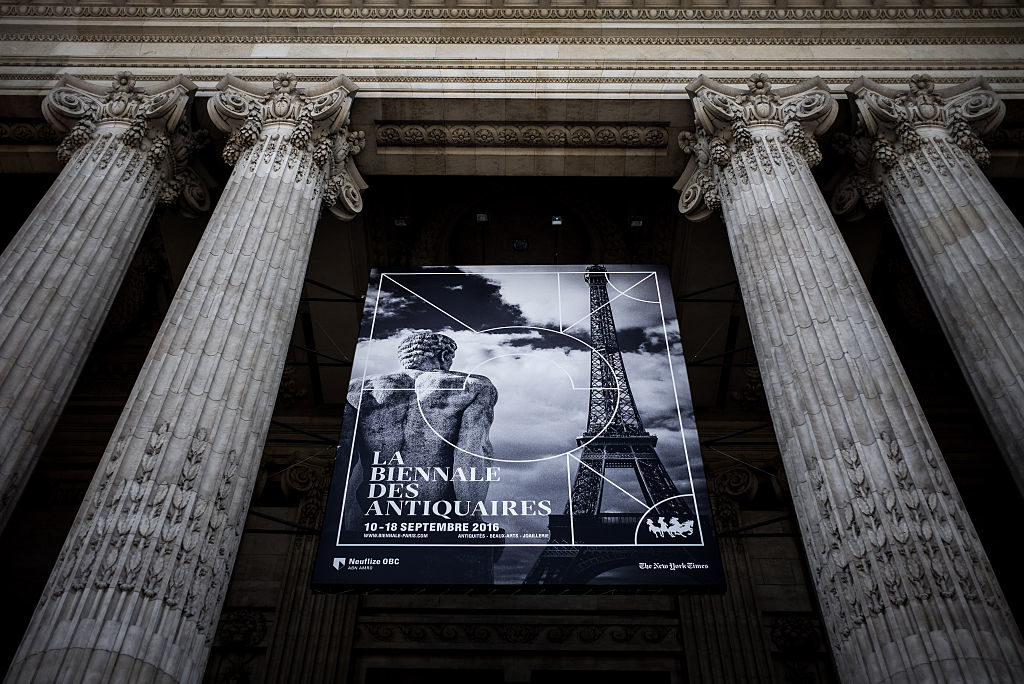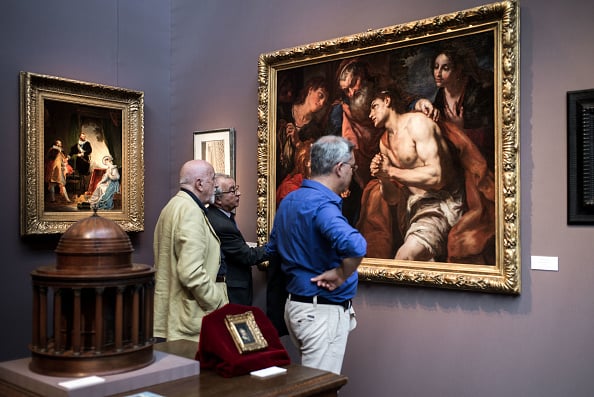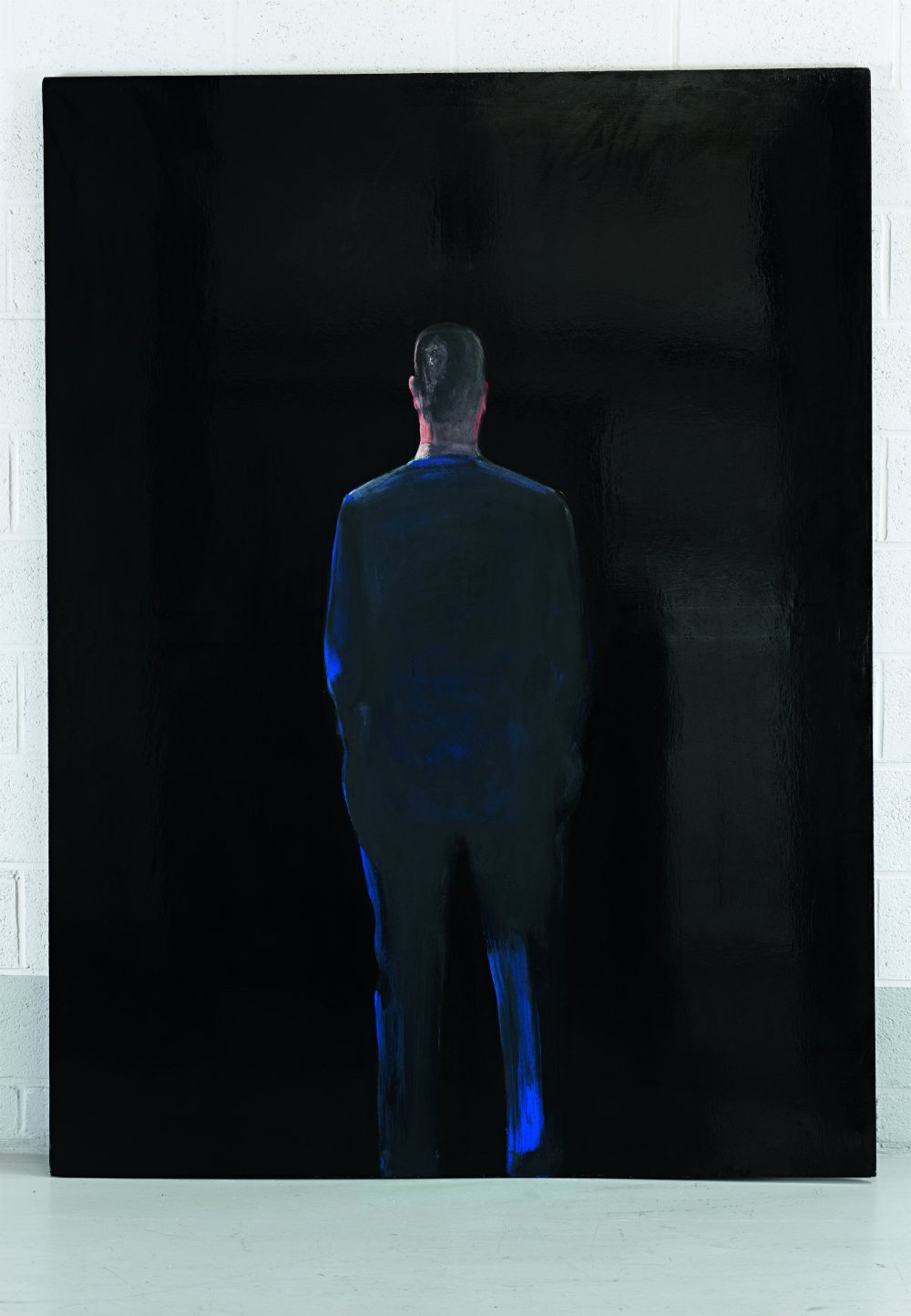Art Fairs
La Biennale des Antiquaires Braces for a Changing Market
The market for antiques and decorative art is getting increasingly competitive.

The market for antiques and decorative art is getting increasingly competitive.

Katy Diamond Hamer

The misleadingly named Biennale des Antiquaires, an art fair for decorative art, antiques, and collectibles, opened its door to the public this past Saturday in Paris’s Grand Palais. Now in its 28th edition, the fair has undergone some major changes adding over 50 new exhibitors, and starting in 2017, will take place annually, making the descriptor “Biennale” doubly inaccurate (A new name will be announced next year).
The fair has also tightened its vetting procedure following the scandal that shook the French field of antiques this year, when a specialist in 18th-century furniture, Bill Pallot, was charged with commissioning two fake chairs which were subsequently sold, through an intermediary, to the Kraemer Gallery.
With 125 booths, the Biennale des Antiquaires under Dominique Chevalier, president of the national union of antique dealers, and Henri Loyrette, former director of the Louvre Museum, is truly of exceptional quality not only in visual execution—the scenography by Nathalie Crinière has been praised by all—but also in the rich dialogues created by the museum quality works available.

The Biennale des Antiquaires opened to the public in Paris, on September 10, 2016. Held in the French capital city for over half a century, the fair brings together 125 exhibitors from 14 countries. Courtesy Philippe Lopez/AFP/Getty Images
Galleries specializing in high-end secondary market from all over the globe are present and unlike many art and trade shows, each booth has its own flavor and je ne sais quoi. A majority of the galleries have been regular participants but among this year’s new entrants there are a lot of dealers focusing on late Modern and even contemporary artists. Renaissance paintings, furniture, and sculptures along with Greek and Egyptian antiquity hang, in some cases, alongside works by Italian Spatialist artist Lucio Fontana and Arte Povera artist Michelangelo Pistoletto.
One of the stand out booths in the fair, by Paris and Geneva based Galerie De Jonckheere, divided their space in half to exhibit paintings by Belgian artist Pieter Brueghel the Younger, juxtaposed with works by Fontana, Pistoletto and Magritte. Commenting on their Pistoletto work, Man See From the Back, the Present, (1961), Laura De Jonckheere stated, “It’s a very special, early piece from 1961 right before he started working on mirrored surfaces. As you might notice, you can see your reflection in the surface of the black varnish, this helped him [develop the concept] to paint on mirrors.” Her brother, Arnaud De Jonckheere added, “After Pistoletto met Francis Bacon, they exchanged ideas and he arrived at this.” The piece, stark black except for a loosely painted figure shown from behind is striking in its simplicity and also special, as it predates the oeuvre that Pistoletto is most known for.

Michelangelo Pistoletto, Man See From the Back, the Present, (1961). Courtesy Galerie de Jonckheere
Many of the exhibitors in attendance, including the Gallery De Jonckheere, are family owned and operated. Nearly all of the dealers I spoke with were part of a genealogy, proudly representing their familial brand.
This year, having gone through a transition, the Biennale is concentrating less on jewelry and has a larger focus on painting. Among the many booths filled with gold Baroque furniture and ornate frames, a piece worth discovering is what initially looked like a large photograph but is in fact The Skull Star Diamond 2 [back-view), a 2007 oil painting by Damien Hirst. Initially acquired through Gagosian Gallery by an unnamed collector, the piece, exhibited with Paris based Galerie Chastel-Marechal, carries a price tag of €650,000. Coinciding perfectly with the overall aesthetic of the Biennale, this painting, possibly the most recent of all exhibited, portrays a pear shaped diamond on a pale blue ground in a gold frame.
From painted diamonds to actual diamonds, a welcomed return to the 2016 circuit included Swiss jewelry house De Grisogono, unveiling “The Constellation,” a 813 carat, rough diamond. Housed in a glass case on a rotating black pillow, the diamond caught the attention of many visitors (how could it not?). To the untrained eye, it shines similarly to a quartz crystal, yet was acquired for a cool $63 million. Other items in the De Grisogono booth included jeweled watches of varying precious stones and materials as well as earrings and pendant necklaces.
Another gallery and recurrent participator of note, Landau Fine Art—run by husband and wife duo Robert and Alice Landau—are selling works by Amedeo Modigliani, Marc Chagall, Henry Moore, and others. A small-scale oil painting by French Fauve artist André Derain, Bateaux sur la plage a Collioure, (1905) was being offered for $3.75 million. “The painting was requested for an upcoming exhibition on Fauvism at the Pompidou,” said Robert Landau. “I’m not sure if we will give it to them yet, but they want it.”

Francesco De’Franceschi, Vierge a l’Enfant, (1440-45). Photograph by Katy Diamond Hamer, 2016.
Within the realm of works suited for the walls of a museum, Vierge a l’Enfant, documented to have been made between 1440 and 1445, a tempera painting in a neo-gothic frame by Venetian painter Francesco De’Franceschi shown with Galerie G. Sarti, is listed at €100,000. It is at this fissure, if you will, where prices and value coincide: Some might be surprise to know that a Renaissance work does not out-value its competitors newer to the market. It does help, as a dealer, to approach questions of value with some distance. “Having a passion is not good for business because it is more difficult to part with the work,” gallery owner Giovanni Sarti revealed.
Another trio of galleries worth mentioning include Cyzer & Zakaim, London, offering Pablo Picasso’s Trois nus, (1964) for €895,000; Galeria Mayoral, Barcelona, whose booth paid homage to the 1937 Pavilion of the Spanish Republic in the International Exposition of Paris, along with some unsuspecting works in the booth of Bottegantica, Milan including Portrait of Edgar Degas, an undated, drypoint etching numbered 11/12 by Giovanni Bolding for €8,000. The latter gallery resolved to exhibit in the Biennale, thematically choosing Italian artists from their stable who made work while living in Paris.
With its direct competitor, TEFAF, expanding with fairs across the Atlantic, and a shaken trust in the French antiques field, the Biennale des Antiquaires is taking the new market conditions seriously, and is gearing up for changes.
The Biennale Des Antiquaires is on view at the Grand Palais, Paris from September 10 – 18.